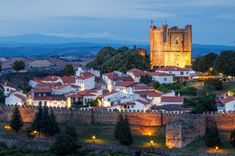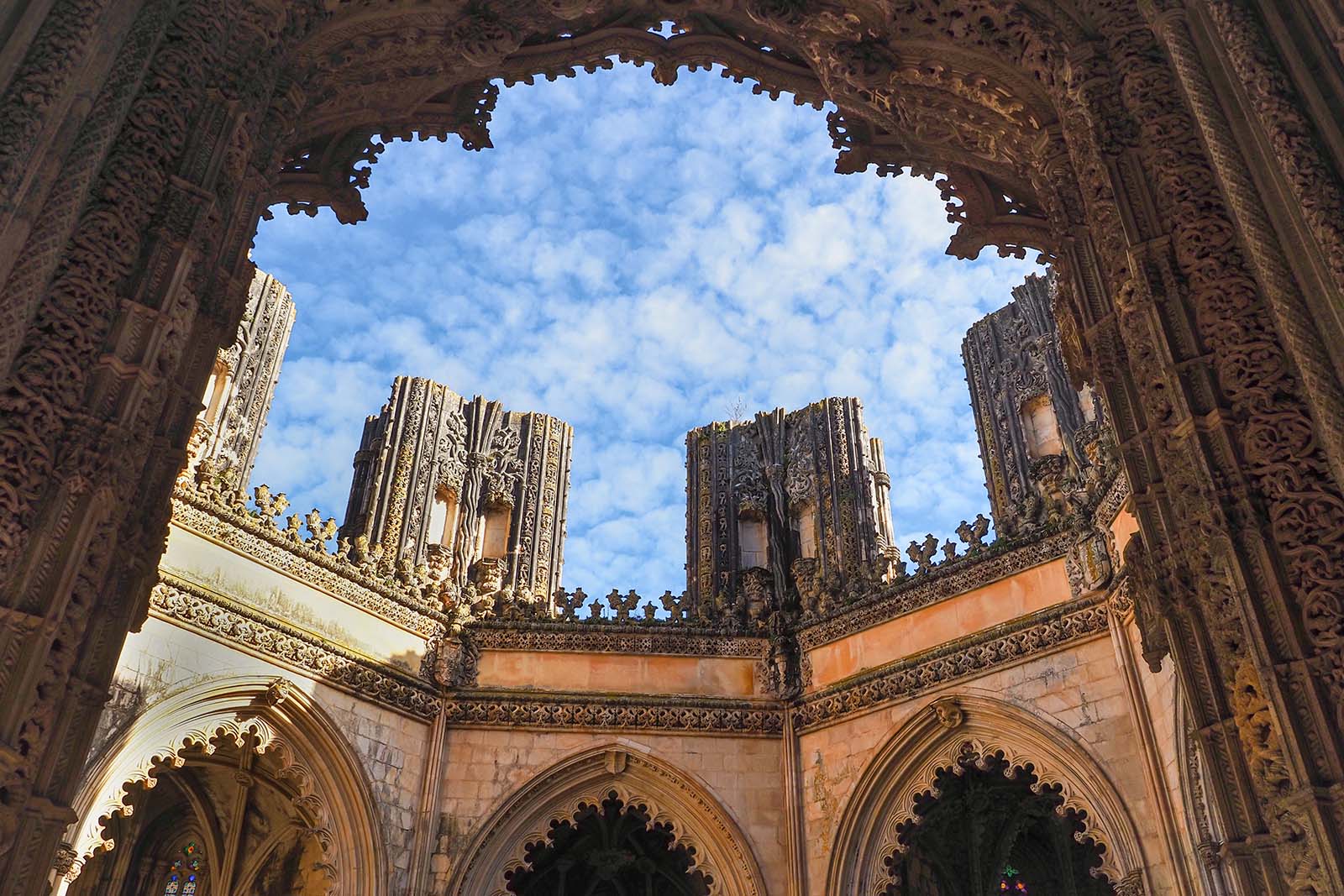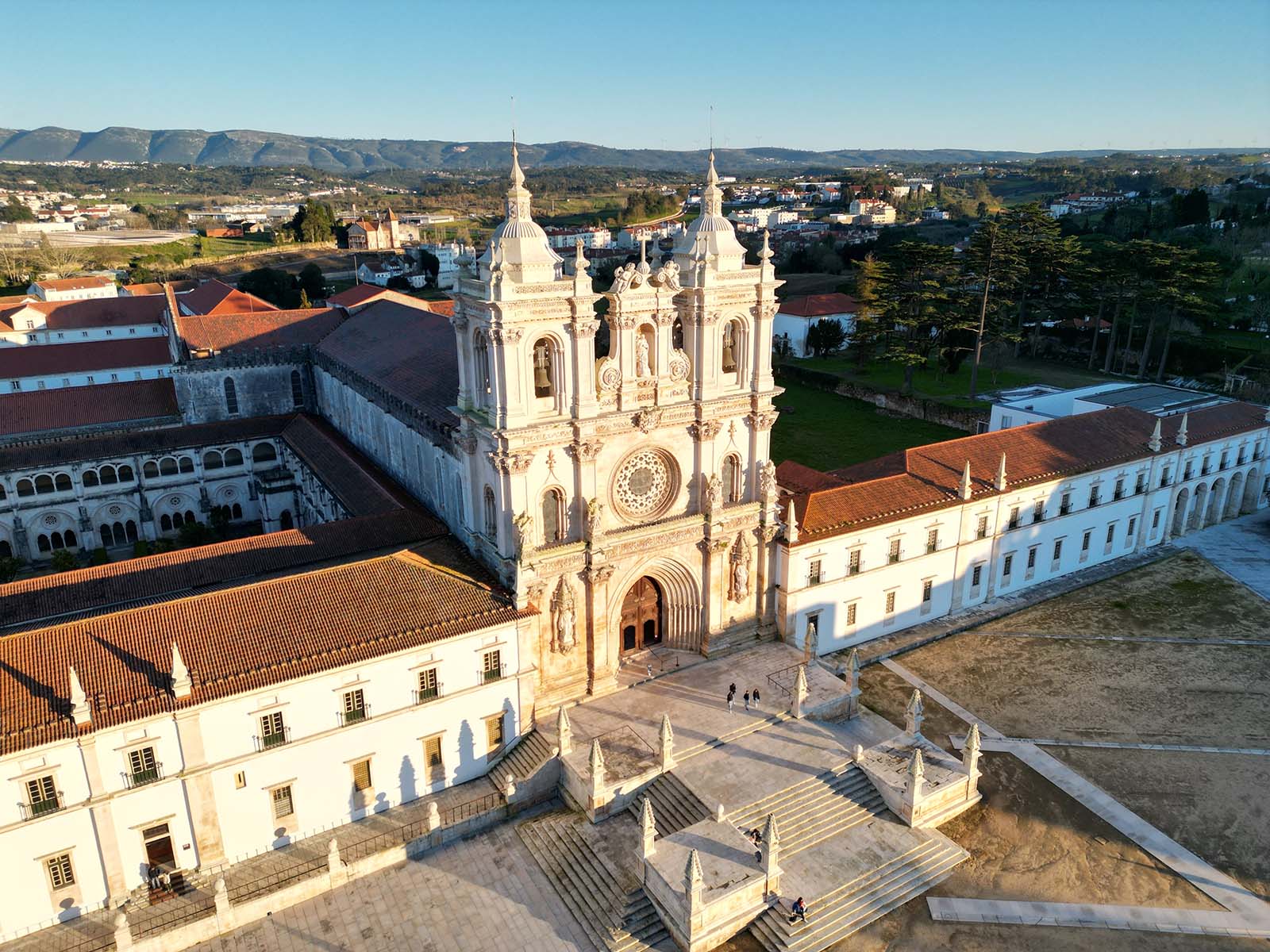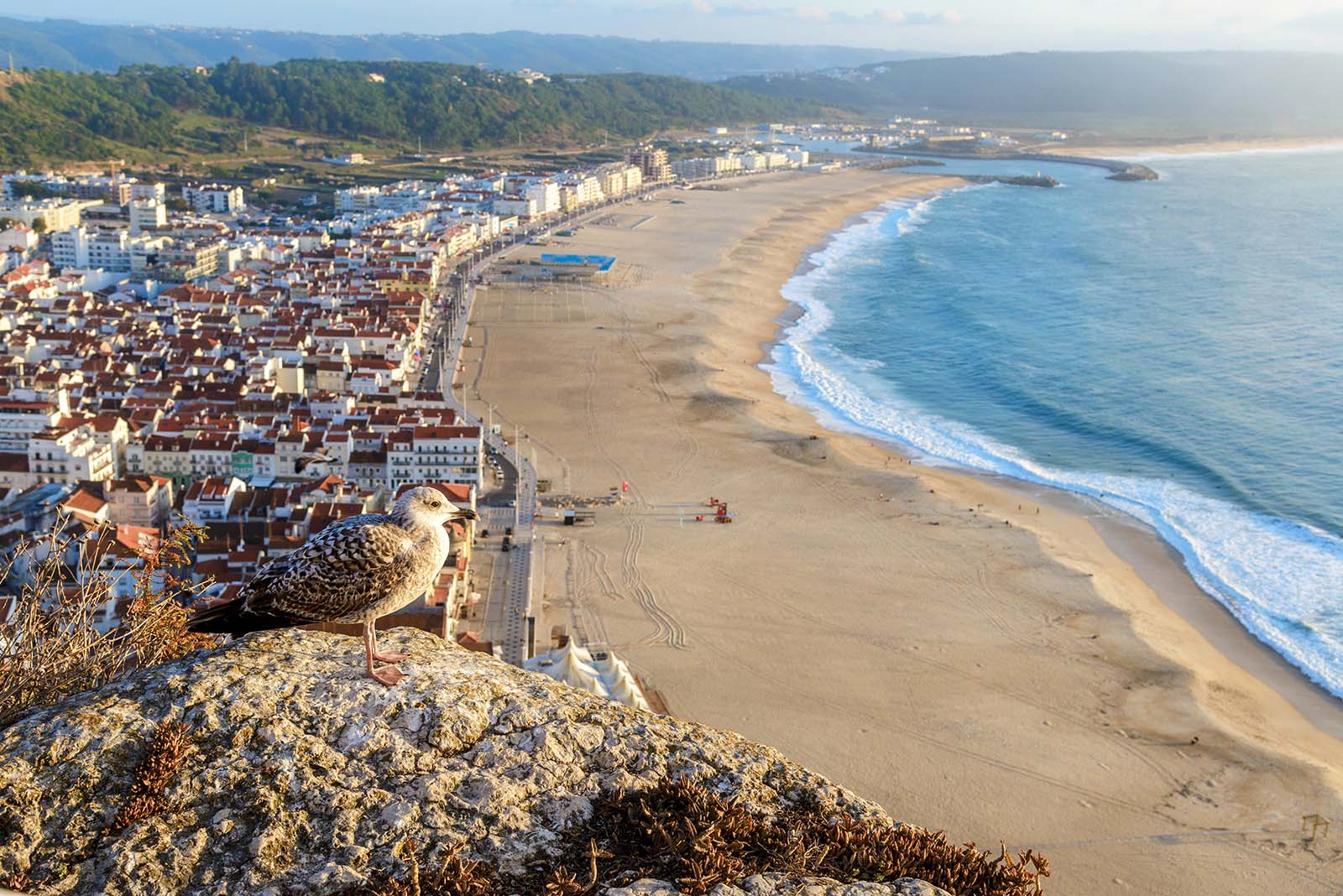Planning your own trip? Prepare for your trip
Use Rough Guides' trusted partners for great rates
Plan and book your private, tailor-made tour with vetted local experts
Batalha is all about its abbey. The Mosteiro de Santa Maria da Vitória, better known as the Mosteiro da Batalha, was built to honor Portugal’s victory over Castile at the Battle of Aljubarrota in 1385. Over the next two centuries, successive monarchs expanded it into a Gothic and Manueline masterpiece, a royal pantheon, and one of the country’s defining monuments. Since 1983 it has been a UNESCO World Heritage site, celebrated as much for its history as for its soaring architecture.
The town around it is small and plain, but the abbey more than justifies the trip, especially once the day-tripping crowds leave and the cloisters fall silent. To deepen the story, head 4 km south to São Jorge, where the battle was fought, and visit the interpretation center for context on the conflict that changed Portugal’s future.

Tips from Luis
Portugal Travel Expert

Hi, I’m Luis, your Portugal travel expert. If you’re drawn to Portugal’s history, Batalha should be on your list. The abbey here isn’t just another church: it’s one of the country’s greatest monuments, a Gothic and Manueline blend built to celebrate Portugal’s independence after the Battle of Aljubarrota in 1385. Inside you’ll find royal tombs, cloisters where silence lingers, and the haunting Unfinished Chapels, open to the sky.
If your trip to Portugal includes a stop between Lisbon and the north, Batalha deserves a little more time, especially once the buses depart and the crowds thin.
Luis’s tip
Come late in the afternoon. The light cuts across the stone, the cloisters fall quiet, and you’ll feel the abbey’s scale without distraction.
Best time to visit
Spring and autumn are ideal, with warm days, fewer crowds, and good light for exploring the abbey. July and August are busier with tour groups and hotter for walking around the open chapels. Winter is cooler but atmospheric, especially when mist settles over the limestone.
How to get to Batalha
Batalha is about 11 km south of Leiria. From Lisbon, it’s a 90-minute drive via the A1, making it an easy day trip by car. Buses from Lisbon’s Sete Rios station run directly to Batalha in about two hours, with services also linking to Leiria and Fátima. Driving is the most flexible option if you want to combine the abbey with nearby Alcobaça or Tomar.
Best areas to stay in Batalha
Batalha lies in central Portugal, 11 km south of Leiria and about 120 km north of Lisbon. The town sits in the fertile limestone hills of the Centro region, close to Fátima, Alcobaça, and Tomar, which together form a cluster of historic and religious sites. By car, the journey takes around 90 minutes from Lisbon or two hours from Porto, with regular bus connections linking Batalha to Lisbon and nearby cities.
Though small, Batalha is often counted among the best places to visit in Portugal thanks to its UNESCO-listed abbey, the Mosteiro da Batalha. From here, you can easily combine a visit with other highlights of the Centro region: the monastery of Alcobaça, the pilgrimage town of Fátima, or even a drive to the Atlantic coast at Nazaré.
















Batalha is compact, with the abbey at its center, so you can see most of the town on foot. The challenge isn’t navigating the town itself but getting in and out, or linking it with nearby highlights like Alcobaça, Tomar, Nazaré, and Fátima. Public transport is limited, which makes driving the easiest and most flexible option.

Batalha, Portugal. City panorama and view to Monastery of Santa Maria da Vitória. (Batalha Monastery) © Altosvic/Shutterstock
If you’re asking how much time Batalha deserves, a half-day is enough to see the abbey properly. That gives you two to three hours to explore the church, cloisters, royal tombs, and the haunting Unfinished Chapels without rushing. Add a coffee or meal in the square, and you’ll have covered the essentials.
But if you’re building a wider Portugal itinerary, consider giving Batalha a full day. That way, you can pair the abbey with a visit to the São Jorge interpretation center, 4 km away on the actual battlefield site, or link it with nearby Alcobaça, Fátima, or Nazaré. Staying overnight isn’t common, but it has its rewards: once the tour buses leave, the abbey square is quiet and beautifully lit, and an early morning visit lets you wander the cloisters almost alone.
Batalha is a small town with only a handful of hotels and guesthouses, most clustered around the abbey square. Staying overnight isn’t essential, but if you do, you’ll get the rare chance to see the abbey floodlit after dark and enjoy the town once the tour buses are gone. Here’s where to base yourself depending on your trip.

Capelas Imperfeitas in Batalha © Shutterstock
Batalha is all about its abbey, but there’s more to see if you take your time. From cloisters echoing with silence to battlefields that shaped Portugal’s history, here are the best things to do in Batalha.
The Mosteiro de Santa Maria da Vitória, better known as the Mosteiro da Batalha, is one of Portugal’s greatest monuments. Built to mark victory over Castile at the Battle of Aljubarrota in 1385, it’s a Gothic and Manueline masterpiece and a UNESCO World Heritage site. Inside, you’ll wander through lofty naves, cloisters with intricate stone tracery, and the Capela do Fundador, where King João I and Queen Philippa of Lancaster rest alongside their famous sons, the “Illustrious Generation.”
The abbey’s Unfinished Chapels are particularly striking: open to the sky, with soaring arches that were never completed. Allow at least two hours to explore properly. Early morning and late afternoon are best for avoiding tour groups and for seeing the golden light on the limestone façades.
While technically part of the abbey complex, the Capelas Imperfeitas (Unfinished Chapels) deserve their own visit. Begun in the 15th century as a royal mausoleum, they were never completed, leaving a circle of ornate arches open to the sky. The effect is dramatic: gothic pinnacles rise above you, while Manueline carvings spiral around doorways that lead nowhere.
It’s one of the most atmospheric corners of the abbey, where silence is broken only by the wind whistling through the stone. Details reward close inspection: armillary spheres, twisted ropes, and floral motifs carved into the walls. Come in the late afternoon when the setting sun lights the carvings in sharp relief. For many, this unfinished masterpiece is more memorable than the completed sections of the monastery.
Four kilometers south of Batalha, the Centro de Interpretação da Batalha de Aljubarrota stands on the site of the battle that changed Portugal’s history. It was here, in 1385, that Portuguese forces under Nuno Álvares Pereira defeated Castile, securing Portugal’s independence.
The modern center uses multimedia displays, models, and films to explain the tactics and stakes of the battle, making it accessible even if you’re not a history buff. Outside, the fields still stretch across gentle hills, giving you a sense of the terrain where cavalry charges clashed. A visit here adds crucial context to the abbey; you see not just the monument that was built in victory, but the ground where it was won. Give yourself an hour or so, and combine it with the abbey for a fuller picture of Batalha’s story.
Tucked inside the abbey, the Founders’ Chapel (Capela do Fundador) is one of its most moving spaces. Built as a royal pantheon, it holds the tomb of King João I and Queen Philippa of Lancaster, whose marriage sealed the Anglo-Portuguese alliance that still endures today. Around them rest their sons, including Prince Henry the Navigator, who spearheaded Portugal’s Age of Discoveries.
The chapel is airy and balanced, its octagonal design bathed in natural light that filters through tall windows. Look closely at the recumbent effigies of João and Philippa, their hands clasped in eternal union, a detail rare in medieval tombs.
The abbey’s cloisters are some of the finest in Portugal. The Claustro Real, begun in the late 14th century, blends Gothic structure with Manueline ornament. Stone tracery frames the gardens, while carved arches bloom with motifs of ropes, shells, and foliage. Each corridor feels different depending on the light, sharp and bright at midday, soft and golden near sunset.
Walking here is a chance to slow down after the vastness of the nave. Monks once passed silently between the chapter house, refectory, and dormitories, and you still feel that rhythm of daily devotion in the architecture. Bring a camera if you enjoy detail: the play of shadow on stone makes endless compositions. Allow at least half an hour just for the cloisters; they are among the abbey’s greatest treasures.
For a broader look at Batalha beyond the abbey, step into the local community museum, a modern space just off the main square. Its exhibitions trace the history of the town from prehistoric settlement through the Middle Ages to the present. Multimedia displays and archaeological finds help explain how Batalha developed alongside its great monastery.
Highlights include models showing the abbey’s construction and artifacts connected to the Battle of Aljubarrota. It’s a compact museum, rarely crowded, and a good way to add depth to your visit in under an hour. Families will appreciate the interactive elements, while history enthusiasts will find useful context for what they’ve already seen at the abbey and battlefield site.
Just 25 minutes from Batalha lies Alcobaça, home to another UNESCO World Heritage monastery. Founded in the 12th century by Cistercian monks, the Mosteiro de Alcobaça is famous for its vast Gothic church and the romantic tombs of King Pedro I and Inês de Castro. Their love story, tragic, violent, and legendary, is etched into the stone effigies that face each other for eternity.
Pairing Alcobaça with Batalha gives you two of Portugal’s greatest monasteries in a single day, each with a distinct character: Batalha celebrates victory and nationhood, while Alcobaça speaks of faith and enduring love. Driving is the easiest way to combine them, though buses link the towns via Leiria. Plan at least two hours for Alcobaça, and if possible, linger in the town to taste its convent sweets, still made according to age-old recipes.

Catholic monastic complex located in the town of Alcobaça © Shutterstock
Only 20 minutes from Batalha lies Fátima, Portugal’s most famous pilgrimage site. Here, in 1917, three shepherd children reported visions of the Virgin Mary, and the town has since grown into one of the world’s leading Marian shrines. The Sanctuary of Fátima includes two vast basilicas, a wide esplanade that fills with pilgrims, and a chapel built on the site of the apparitions.
Even if you’re not religious, the scale and intensity of devotion are striking, especially on May 13 and October 13 when pilgrimages peak. From Batalha, it’s an easy half-day trip, either by car or local bus.
Half an hour west of Batalha, Nazaré is one of the best seaside towns in Portugal and has two distinct sides: a working fishing village and a global surf mecca. On the main beach, brightly painted boats recall traditional fishing culture, while on the cliffs above Praia do Norte, waves rise to record-breaking heights each winter. Big-wave surfers from around the world gather here, making it one of the most spectacular coastal sights in Portugal.
For a gentler visit, ride the funicular up to Sítio, a clifftop neighborhood with sweeping ocean views, a small chapel, and plenty of seafood restaurants. Nazaré’s wide sandy stretches, including Praia da Nazaré itself, are often listed among the best beaches in Portugal, perfect if you’d rather swim or sunbathe than chase adrenaline. It pairs easily with Batalha and Alcobaça, turning a history-heavy day into one that ends with sea air and grilled sardines.
Batalha comes alive during festivals, when the abbey square fills with music, stalls, and processions. In August, the Feira de Artesanato e Gastronomia showcases crafts and regional food, while December brings Christmas markets and concerts in the shadow of the monastery. Smaller religious events throughout the year add local color, often with traditional dress and folk music.
If you’re lucky, you might also catch a concert inside the abbey itself. The acoustics are extraordinary, and hearing choral music or organ recitals in such a space adds a completely different dimension to your visit. Check local listings at the tourism office or the abbey entrance, events are irregular, but worth planning around.
Batalha has a mild Atlantic climate, shaped by its location in central Portugal just 30 minutes from the coast. Summers are warm and dry but rarely extreme, winters are cooler with regular rain, and spring and autumn bring pleasant, changeable weather. Average temperatures range from 47°F (8°C) in January to 82°F (28°C) in August. Proximity to the ocean means evenings are usually cooler than in inland towns like Tomar. For current conditions, check IPMA (Portuguese Institute for Sea and Atmosphere).

Aerial view of Nazare city and Praia da Nazare Beach, Portugal © Shutterstock
Batalha’s dining scene is modest but rewarding, centered around hearty Beira Alta cooking and the convent sweets once made by monks and nuns. Restaurants here tend to be simple, family-run, and within a short walk of the abbey square. Expect generous plates of roasted meats, stews, and local wines, plus a chance to try sweets whose recipes date back centuries. Prices are reasonable, and portions rarely leave you hungry.
Here are some unique experiences to make your trip to Batalha more rewarding, all private, flexible, and guided by locals who know the region inside out.
Discover Portugal's most captivating stories
Use Rough Guides' trusted partners for great rates
written by
Olga Sitnitsa
Online editor at Rough Guides, specialising in travel content. Passionate about creating compelling stories and inspiring others to explore the world.